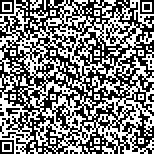本文已被:浏览 773次 下载 505次
投稿时间:2020-06-08 网络发布日期:2020-12-20
投稿时间:2020-06-08 网络发布日期:2020-12-20
中文摘要: 目的 探讨妊娠滋养细胞疾病患者血清趋化因子10(CXCL10)的表达及对葡萄胎恶变的预测价值。方法 收集2017年1月至2019年9月青海省人民医院收治的80例妊娠期滋养疾病患者病例资料作为观察组,并选择同期接受体检的健康孕妇60例作为对照组,观察组所有病例在清宫术后均密切随访,观察葡萄胎恶变发生率,使用酶联免疫吸附法(ELISA)检测患者血清CXCL10的表达,分析其对葡萄胎恶变的预测价值。结果 观察组血清CXCL10明显高于对照组,且观察组中完全性葡萄胎患者血清CXCL10水平明显高于部分性葡萄胎患者(P<0.01)。经随访,完全性葡萄胎患者有13例出现恶变,均为侵袭性葡萄胎,恶变率为16.25%,葡萄胎恶变组血清CXCL10水平明显高于未恶变组(P<0.01)。在年龄≥40岁、子宫大小>妊娠月份、血清β-人绒毛膜促性腺激素(β-HCG)≥105 mIU/ml、有重复性葡萄胎、黄素化囊肿直径≥6 cm的葡萄胎患者恶变率明显更高,且血清CXCL10的水平也明显更高(P<0.01);将葡萄胎是否恶变作为因变量,血清CXCL10作为协变量,经过Logistic回归分析显示,血清CXCL10水平是葡萄胎恶变的危险因素(P<0.01)。结论 在妊娠期滋养疾病患者中血清CXCL10的表达明显升高,且是导致葡萄胎恶变的危险因素。
Abstract:Objective To investigate the expression of serum chemokine 10 (CXCL10) in patients with gestational trophoblastic disease (GTD) and its predictive value for malignant transformation of hydatidiform mole. Methods The data of 80 cases of gestational trophoblastic disease in Qinghai Provincial People′s Hospital from January 2017 to September 2019 were collected as the observation group, and 60 healthy pregnant women who received physical examination in the same period were selected as the control group.All cases in the observation group were followed up closely after curettage.The incidence of malignant transformation of hydatidiform mole was observed.The expression of CXCL10 in serum was detected by enzyme-linked immunosorbent assay (ELISA), and its predictive value for hydatidiform mole malignant transformation was analyzed. Results The serum CXCL10 level in the observation group was significantly higher than that in the control group, and the serum level of CXCL10 in patients with complete hydatidiform mole was significantly higher than that in patients with partial hydatidiform mole (P<0.01).After 3 months of follow-up, 13 cases of complete hydatidiform mole had malignant transformation, all of them were invasive hydatidiform mole.The malignant transformation rate was 16.25%.The serum CXCL10 level in the malignant transformation group of hydatidiform mole was significantly higher than that in the non-malignant transformation group (P<0.01).The malignant transformation rate and the serum level of CXCL10 were significantly higher in patients with age≥40 years, abnormal growth of uterine size, serum β-hCG≥105 mIU/ml, recurrent hydatidiform mole, luteinized cyst and hydatidiform mole with diameter≥6 cm (P<0.01).The incidence of hydatidiform mole as a dependent variable and serum CXCL10 as a covariate, and the Logistic regression analysis showed that serum CXCL10 level was the risk factor of hydatidiform mole malignant transformation (P<0.01). Conclusion The expression of CXCL10 in gestational trophoblastic disease patients was significantly increased, and it was a risk factor of hydatidiform mole malignant transformation.
keywords: Gestational trophoblastic disease Hydatidiform mole Malignant transformation Chemokine 10 Clinicopathology Luteinzed cyst β-HCG
文章编号: 中图分类号:R737.33 文献标志码:A
基金项目:青海省医药卫生科技项目指导性计划课题(2018-wjzdx-08)
附件
| Author Name | Affiliation |
| WEI Min, XU Ling-yan, HAN Jie, XU Yan, FAN Li-li | Department of Gynecology, Qinghai Provincial People′s Hospital, Xining, Qinghai 810000, China |
引用文本:
魏民,徐凌燕,韩婕,徐燕,樊莉莉.妊娠滋养细胞疾病患者血清趋化因子10的表达及对葡萄胎恶变的预测价值[J].中国临床研究,2020,33(12):1616-1619.
魏民,徐凌燕,韩婕,徐燕,樊莉莉.妊娠滋养细胞疾病患者血清趋化因子10的表达及对葡萄胎恶变的预测价值[J].中国临床研究,2020,33(12):1616-1619.
